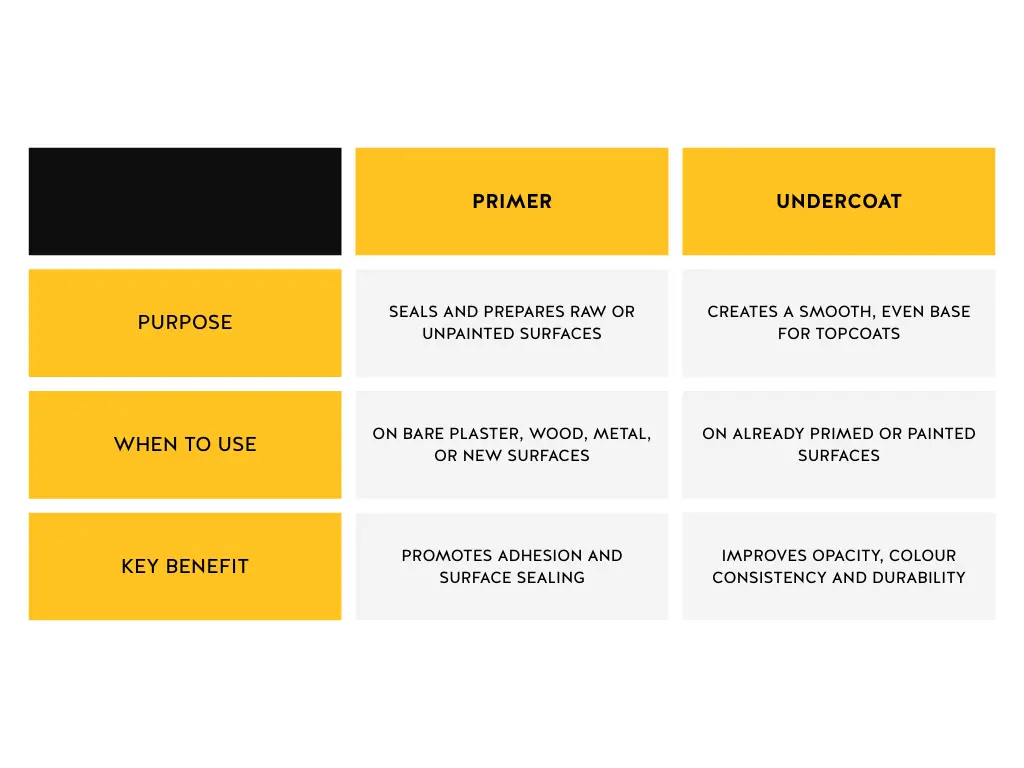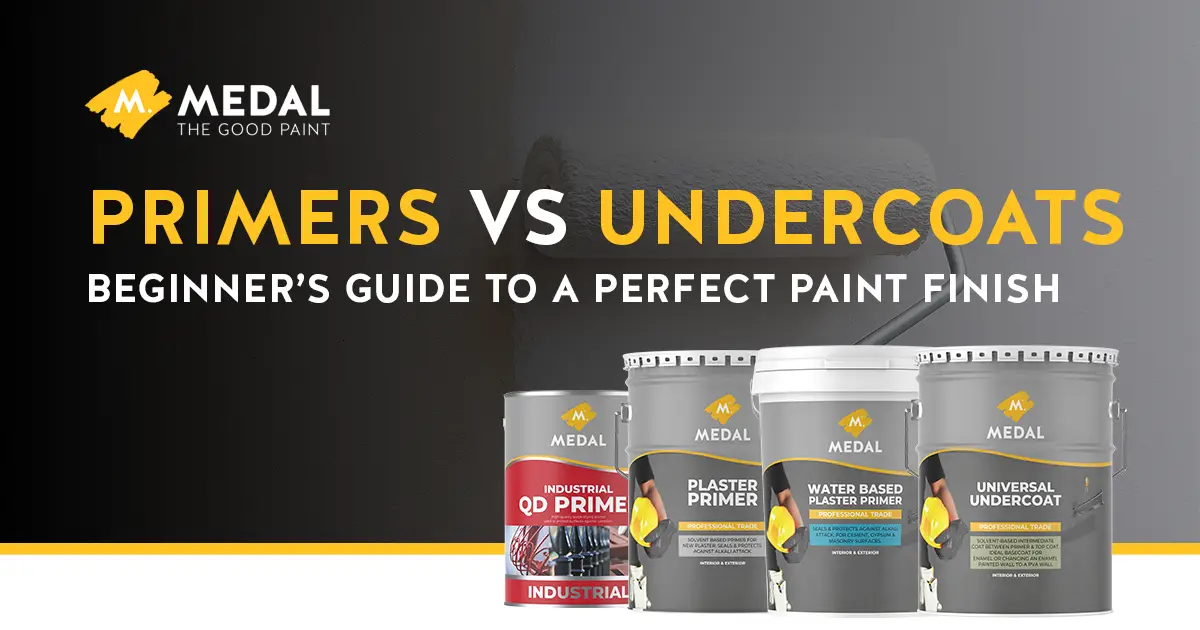When it comes to painting, what lies beneath the surface matters just as much as the colour on top. That’s where primers and undercoats come in. While often confused, these two products serve very different – but equally essential – roles in ensuring your paint finish is smooth, long-lasting, and leaves the desired colour on the wall.
In this beginner’s guide, we’ll break down the difference between primers and undercoats, when and where to use the products, and showcase top-quality options from Medal Paints to get the best results every time.
What is a Primer?
A primer is the first coat applied to bare or unpainted surfaces before painting commences. Its main job is to seal the surface, promote adhesion, and prepare the substrate for a smooth, more uniform topcoat. Depending on the surface you’re painting – whether it’s new plaster, previously painted surfaces, or steel – different types of primers are recommended.
Types of Primers and When to Use Them
🔹 Water-Based Plaster Primer
Medal Professional Water-Based Plaster Primer is specially formulated for interior and exterior use on new, dry-plastered walls. It helps bind the loose, chalky surface of raw plaster, preventing absorption and creating a stable base for your paint to adhere to. It’s also low odour and environmentally friendly—perfect for indoor spaces.
🔹 Solvent-Based Plaster Primer
Medal Professional Trade Plaster Primer is ideal for tougher plaster surfaces and outdoor use. It provides excellent penetration and alkali resistance, ensuring a tough, durable foundation on more porous or high-exposure areas.
🔹 Steel Primer
For metal surfaces, a specialised primer is essential. The QD Industrial Primer by Medal Paints is a quick-drying, anti-corrosive solution designed specifically for steel. It prevents rust and provides superior adhesion for subsequent coats—making it essential for industrial and commercial steelwork.
Pro Tip: Never skip the primer on new or porous surfaces. It prevents the topcoat from soaking in unevenly, saving paint and ensuring a more even colour.
What is an Undercoat?
While a primer prepares bare surfaces, an undercoat is used on already primed or previously painted surfaces to build opacity and create a consistent base for your final colour. It’s especially important when transitioning from a dark to a light colour, or vice versa.
Undercoats help to:
- Enhance colour accuracy
- Provide a consistent finish
- Improve durability of the topcoat
What Makes Our Undercoat Universal?
Medal Professional Trade Universal Undercoat is formulated to work over both enamel and water-based primers and can be overcoated with most types of decorative paints. This makes it a versatile go-to product for a wide range of painting jobs, saving both time and effort on the job site.
Primer vs Undercoat: What’s the Difference?

Why Use Both?
Using both a primer and an undercoat gives your project the ultimate foundation:
- The primer ensures adhesion and seals the surface.
- The undercoat builds a uniform colour base.
- Together, they help your topcoat look better and last longer.
Especially for professional results, this two-step preparation is worth the investment—reducing the risk of peeling, flaking, and uneven colour.
Understanding the roles of primers and undercoats is key to any successful painting project. Whether you’re working with new plaster or metal, or just repainting a room, choosing the right preparatory products can make all the difference.
At Medal Paints, we offer a full range of high-quality primers and undercoats trusted by professionals across South Africa. From our water-based and solvent-based plaster primers to our universal undercoat and QD industrial steel primer, we’ve got every surface covered.




